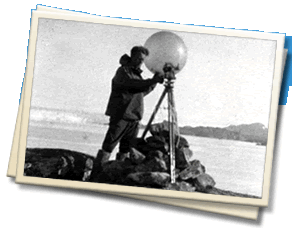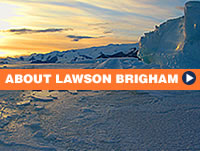

The University of Delaware is pleased to announce "The William S. Carlson International Polar Year Events," a series of public lectures, receptions, research seminars, art exhibits, and film showings at UD, to increase public awareness of the importance of the world’s polar regions.
The series fittingly is named after William S. Carlson, UD’s president from 1946 to 1950, who was an active polar researcher himself. Carlson led expeditions to Greenland, established air transport routes through the Arctic as a colonel in the U.S. Army Air Forces, and wrote about his experiences in scientific and popular publications, including the books Greenland Lies North (1940) and Lifelines Through the Arctic (1962). He also was a founding member of the Arctic Institute of North America.
We hope you'll join us for these exciting events at the University of Delaware, a leader in polar research!
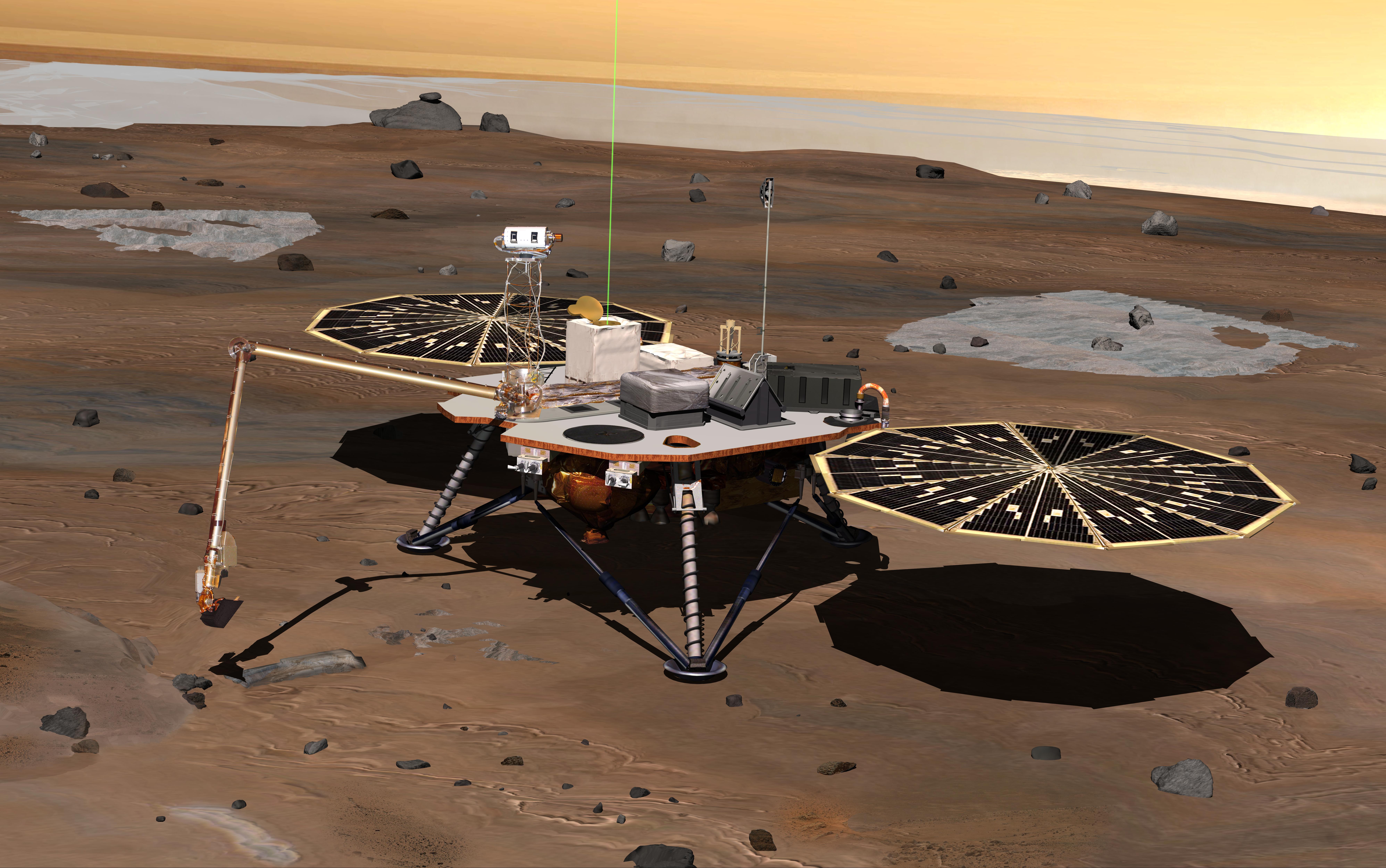
Time: 7:30 p.m.
Location: Roselle Center for the Arts, Newark Campus
Directions: Click here.
Registration Fee: FREE (seating is limited)
Peter Smith, senior research scientist at the University of Arizona and principal investigator of NASA's Phoenix Mars Mission, will highlight the novel spacecraft's discoveries in the “The Journey of the Phoenix,” a public lecture on Thursday, April 16, at 7:30 p.m. at the University of Delaware's Roselle Center for the Arts.
The Phoenix Mars Lander, the first in NASA's Scout class, was launched August 4, 2007, and touched down in the Martian Arctic on May 25, 2008, to search the soil of the Red Planet for the building blocks of life.
During five months of operations, the probe confirmed the presence of frozen water just below the planet's surface, found minerals that form in liquid water, identified potential nutrients in the soil, and observed snow in the atmosphere. Phoenix's cameras captured more than 25,000 pictures, from grand landscapes to nanoscale images using the first atomic force microscope ever used outside Earth.
Throughout the mission, which ended in November 2008, Smith and his team controlled the lander from the University of Arizona's Science Operations Center, working closely with NASA's Jet Propulsion Laboratory in Pasadena, Calif., and Lockheed Martin Space Systems in Denver. An international assembly of scientific institutes in Canada, Denmark, Finland, Germany, and Switzerland also was involved.
Smith will receive the American Geographical Society's prestigious Cullum Geographical Medal on Wednesday, April 15, at the Roselle Center for the Arts.
Together, the award ceremony and public lecture mark the culmination of the University of Delaware's William S. Carlson International Polar Year Events.
Presented in cooperation with the American Geographical Society of New York City, the series of public lectures, seminars, receptions, exhibitions, and films celebrated William S. Carlson, UD's president from 1946-1950, who was an Arctic explorer, and the University's significant polar research in the world's fourth International Polar Year, which began in March 2007 and concluded in April 2009.
For more information, click here.

Time: 7:30 p.m.
Location: Roselle Center for the Arts, Newark Campus
Directions: Click here.
Registration Fee: FREE (seating is limited)
The American Geographical Society's awards ceremony on Wednesday, April
15, at the University of Delaware will honor past and present polar explorers
-- of this planet and of Mars -- including Peter Smith, leader of NASA's
Phoenix Mars Mission and the late Matthew Henson (pictured at left),
who accompanied Commander Robert Peary on the 1909 expedition to the
North Pole. The
two will receive the prestigious Cullum Geographical Medal.
Also recognized will be the researchers who oversaw the gargantuan task of relocating the society's library, described as “the largest privately owned geographical research collection in the western hemisphere,” from New York to Wisconsin in the 1970s. Barbara Borowiecki, professor emerita of geography, and William Roselle, retired director of the Golda Meir Library, both from the University of Wisconsin-Milwaukee, will be honored with the Samuel F. B. Morse Medal.
A reception will follow the event.
For more information, click here.
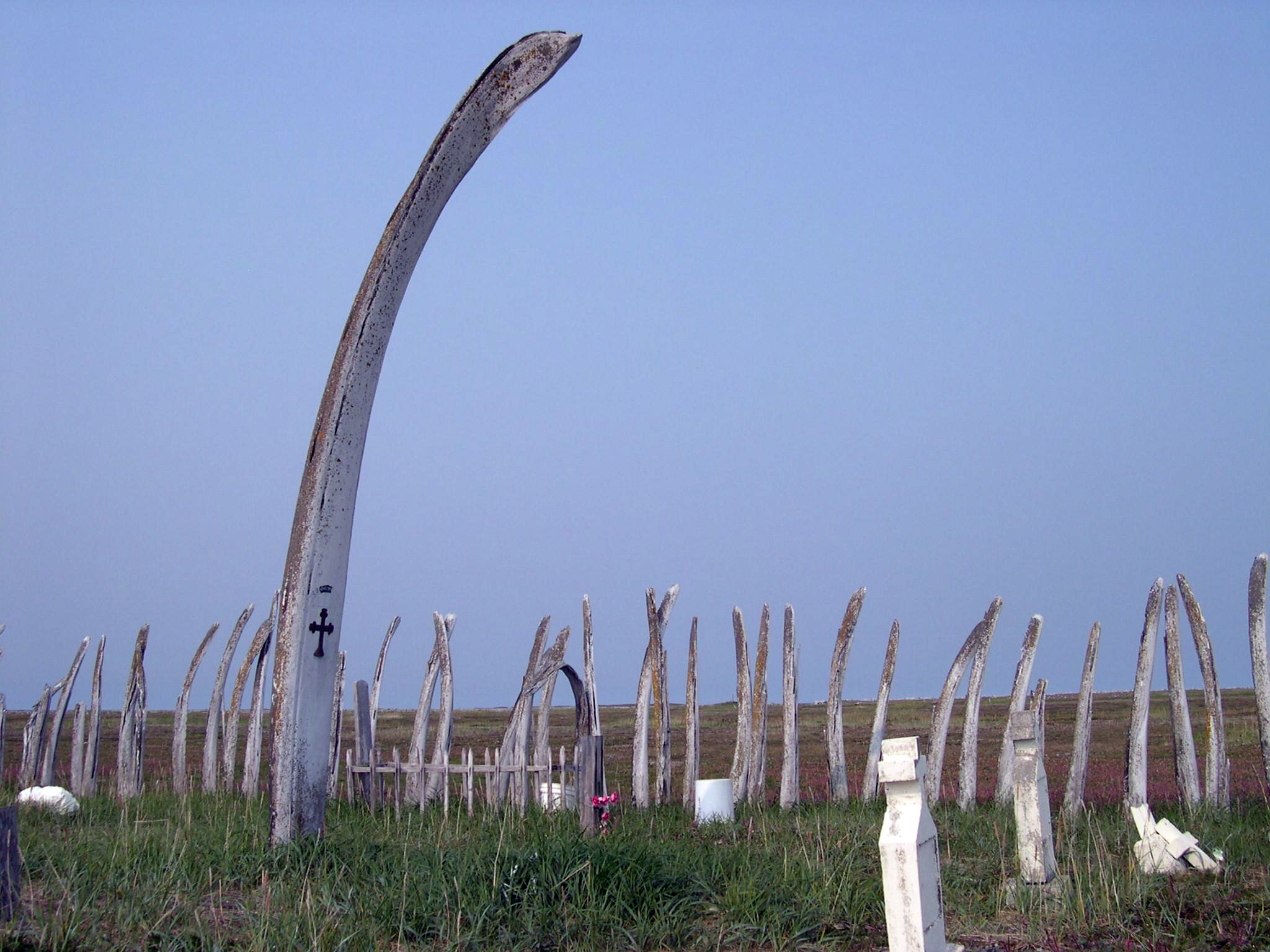
Time: 3:30 p.m.
Location: 127 Memorial Hall, Newark Campus
Directions: Click here.
Registration Fee: FREE (seating is limited)
The Inupiaq people of Alaska live in the northernmost regions of the United States and the North American mainland, including the city of Barrow, the most northern U.S. city. In this harsh Arctic environment, the bowhead whale is central to life and culture. In fact, the Inupiaq identify themselves as the "People of the Whales."
However, global warming is not only affecting bowhead whales and the subsistence whaling on which the Inupiaq depend, but it also threatens the oral traditions, traditional music, and indigenous world views of the Inupiaq people, according to Chie Sakakibara, a postdoctoral fellow at Columbia University's Earth Institute.
Sakakibara, who has conducted fieldwork in Barrow, Alaska, funded by the National Science Foundation and the Barrow Arctic Science Consortium, will elaborate on the cultural survival efforts and sustainability of the Inupiaq people in their environment and invite the audience to consider the past, present, and future of the polar region and beyond in a time of climate change.
For more information, click here.
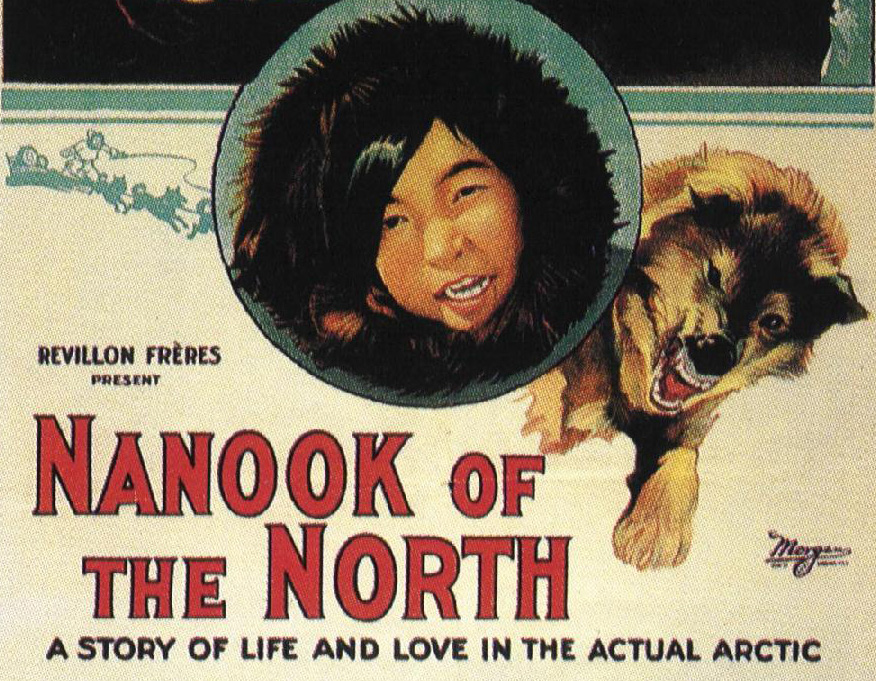
Time: 7:30 p.m.
Location: Trabant University Theatre, Newark Campus
Directions: Click here.
Registration Fee: FREE (seating is limited)
“Nanook of the North,” the silent film released in 1922 documenting the life of the Inuit people in Arctic Canada, will be presented Sunday, March 1, at 7:30 p.m. in Trabant University Theatre.The film, the first feature-length documentary, was produced by American filmmaker Robert Flaherty, who had worked as a prospector and explorer in northern Quebec, where he became intrigued by the Inuit and their lifestyle.
While Flaherty's work was considered ground-breaking, he also has been criticized for staging scenes in the film and distorting reality by, for example, encouraging “Nanook” (an Inuit whose real name was Allakariallak) to hunt as his ancestors had rather than with the gun he normally would have used.
Kevin Kerrane, professor of English, will deliver an interpretive lecture about the film and its significance prior to the showing. ncluded in his presentation will be examples from a collection of Inuit sketches that were collected by Flaherty while he was on the film shoot in 1920-1921 and now owned by the American Geographical Society.
For more information, click here.
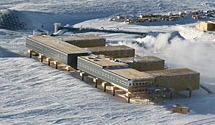
Time: 5 p.m.
Location: Memorial Hall, Newark Campus
Directions: Click here.
Registration Fee: FREE (seating is limited)
Jerry Marty, facilities construction and maintenance manager for the National Science Foundation’s Office of Polar Programs, Division of Antarctic Sciences, has spent the past seven years as the on-site construction manager for the Amundsen-Scott South Pole Station, which opened in January 2008. He will talk about what it took to build this “home-away-from-home” for scientists working in the heart of Antarctica. The new research station sits at the Earth’s axis atop a constantly shifting continental ice sheet nearly two miles thick. Among its most novel features, hydraulic jack columns allow the building to be raised in 10-inch increments to keep it out of drifting snow.
A catered reception will follow the lecture in the dome (third floor) of Memorial Hall. The lecture also will be Webcast live and simulcast into UD Second Life. A podcast will be available within a few days after the lecture.
For more information, click here.
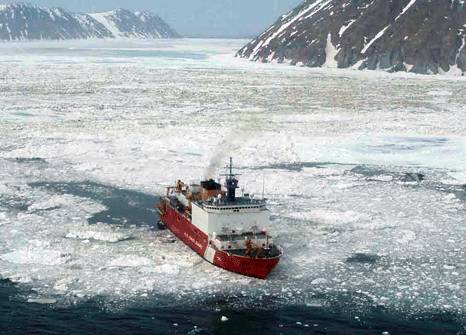
Time: 4 p.m.
Location: Room 202, Cannon Laboratory, Hugh R. Sharp Campus, Lewes; also broadcast via ITV to Room 206, Robinson Hall, Newark
Registration Fee: FREE
Jacqueline Grebmeier, research professor and biological oceanographer at the University of Maryland Center for Environmental Science’s Chesapeake Biological Laboratory, will discuss recent international research cruises in the northern Bering and Chukchi seas between Alaska and Russia. These studies add critical information to research in the region and help scientists understand the changes being observed in animal populations there. Grebmeier will discuss past and current data collected in the western Arctic that suggest a potential reorganization of this extremely productive marine ecosystem is underway.
The seminar is sponsored by the UD College of Marine and Earth Studies and the Department of Biological Sciences.
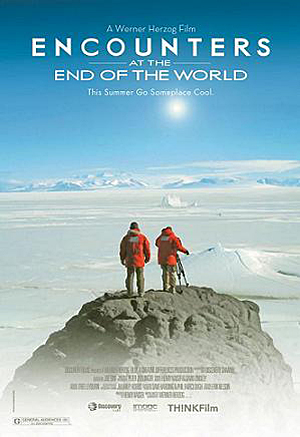
Time: 7:30 p.m.
Location: Trabant University Center Theatre
Registration Fee: FREE
The German director Werner Herzog and his cinematographer, Peter Zeitlinger, traveled to McMurdo Station on Ross Island, the logistical hub of the U.S. Antarctic Program and home to 1,100 people during the austral summer, to film fascinating people and animals on their adventures in this extreme environment.
The Discovery Channel film will be introduced by Julia Dooley, a Delaware schoolteacher who spent two months on the ANDRILL project in Antarctica in 2007.
The film showing is sponsored by the University of Delaware's Center for International Studies and the William S. Carlson International Polar Year Events as part of UD's Fall 2008 International Film Series.
For more information, click here.

Day: Thursday, Nov. 20
Time: 3:30 p.m.
Location: Room 202, Cannon Laboratory, Hugh R. Sharp
Campus, Lewes; also broadcast via ITV to Room 206, Robinson Hall,
Newark
Registration Fee: FREE
Bruce Sidell, professor of marine sciences at the University of Maine, will talk about the Antarctic icefishes. These fish lack hemoglobin, the protein that transports oxygen from the gills to the rest of the body and gives blood its red pigment. Their low-temperature environment helps oxygen dissolve in the blod easier.
The lecture is sponsored by the College of Marine and Earth Studies and the Department of Biological Sciences.

Day: Friday, Nov. 14
Time: 5 p.m.
Location: 123 Memorial Hall, Newark Campus
Directions: Click
here.
Registration Fee: FREE (seating is limited)
Just as flying buttresses help support the Gothic cathedrals of Europe, the ice shelves of Greenland and Antarctica hold back the ice from the oceans, according to Richard Alley, Evan Pugh Professor of Geosciences and associate of the Earth and Environmental Systems Institute at the Pennsylvania State University. An acknowledged expert on global warming and sea-level changes, Alley will discuss what we know and don't know about the future of ice sheets and sea level.
The lecture is sponsored by the Department of Geography and the Department of Geological Sciences.
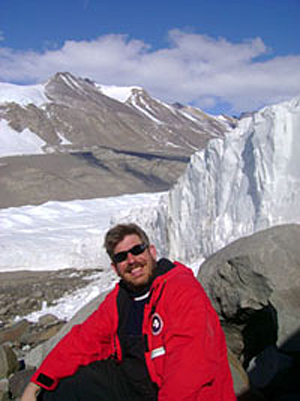
Time: 12:30 p.m.
Location: Room 202, Cannon Laboratory, Hugh R. Sharp Campus, Lewes; also broadcast via ITV to Room 206, Robinson Hall, Newark
Registration Fee: FREE
The organisms that have adapted to live in Earth's extreme environments can tell us a lot about the globe's environmental cycles. Brian Lanoil, assciate professor of biological science at the Univesity of Alberta, will discuss one of the most extreme environments on Earth--Don Juan Pond, which is located in Antarctica and possibly the only known surface body of water on Earth without life. He also will discuss ice cores, including ones from Greenland and Lake Vostok, a subglacial lake more than two miles beneath the Antarctic ice.
The lecture is sponsored by the College of Marine and Earth Studies and the Department of Biological Sciences.
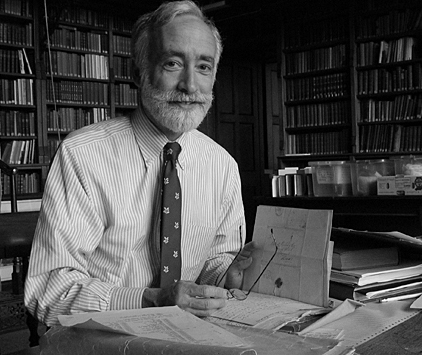
& the Decorative Arts"
Time: 5-6:30 p.m.
Location: Memorial Hall, Newark Campus
Directions: Click here.
Registration Fee: FREE (seating is limited)
Peck, curator of art and artifacts and senior fellow at the Academy of Natural Sciences of Philadelphia, will discuss how Arctic enthusiasm manifested itself in everyday items of material culture, from children's card games and Arctic-inspired tableware, to spectacular presentation silver pieces depicting icebergs, polar bears and Inuit hunters.
The lecture is co-sponsored by the Center for Material Culture Studies and the Department of Art Conservation. A reception will follow the lecture in the dome (third floor) of Memorial Hall. The lecture also will be Webcast live and simulcast into UD Second Life. A podcast will be available within a few days after the lecture.
For more information, click here.
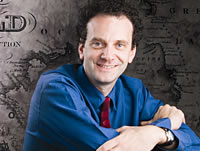
Time: 7:30 p.m.
Location: Gore Recital Hall of the Roselle Center for the Arts
Directions: Click here.
Registration Fee: FREE (seating is limited)
Books will be available for purchase for $39
Robinson, an assistant professor of history at Hillyer College, University of Hartford, will explore the phenomenon of “Arctic Fever” that swept the nation in the late 1800s as dozens of American expeditions sailed north to the Arctic to find a sea route to Asia and, ultimately, to stand at the North Pole.
The event, which is part of UD's programming to mark the International Polar Year and is cosponsored by University Museums and several other on- and off-campus units, It is free and open to the public, books will be available for purchase for $39, and those interested in learning more details can call (302) 831-8037.
For more information, click here.
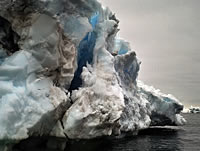
"The Last Iceberg: Photographs by Camille Seaman" & "Poles Apart: Photography, Science and Polar Exploration"
Exhibition Hours: Hours are from 11 a.m.-4 p.m. on Tuesdays, Thursdays & Fridays, from 11 a.m.-8 p.m. on Wednesdays, and from 1-4 p.m. on Saturdays & Sundays
Location: University Gallery, Old College
Admission: FREE
The University Museums of the University of Delaware will hold two exhibitions from Sept. 9-Dec. 7, in the University Gallery, Old College, as part of the University of Delaware's contribution to the International Polar Year 2007-2008.
The exhibitions, The Last Iceberg: Photographs by Camille Seaman, and Poles Apart: Photography, Science and Polar Exploration, are free and open to the public. Gallery hours are from 11 a.m.-4 p.m. on Tuesdays, Thursdays and Fridays, from 11 a.m.-8 p.m. on Wednesdays, and from 1-4 p.m. on Saturdays and Sundays.
For more information, visit the University of Museum Web site.

Time: 5:00 p.m.
Location: Trabant University Center Theatre
Directions: Click here.
Registration Fee: FREE (seating is limited)
The moment that contemporary photographer Camille Seaman “met her planet” is seemingly frozen in time, not to be forgotten, just like her evocative images of monolithic icebergs.
Seaman shared her personal journey of discovery and passion for her art during her lecture, “Melting Away: The Last Iceberg,” on Sept. 10, at the University of Delaware. The presentation, sponsored by UD's William S. Carlson International Polar Year Events and University Museums, preceded the opening reception for two exhibitions at the University Gallery--“The Last Iceberg: Photographs by Camille Seaman,” and “Poles Apart: Photography, Science and Polar Exploration.”
For more information, click here.
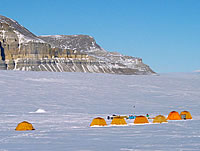
Are We Waking Sleeping Giants?"
Time: 7:30 p.m.
Location: Gore Recital Hall, Roselle Center for the Arts
Directions: Click here.
Registration Fee: FREE (seating is limited)
From research camps atop glaciers in some of the most remote regions of the planet, Waleed Abdalati, head of the Cryospheric Sciences Branch at NASA’s Goddard Space Flight Center in Greenbelt, Md., has witnessed remarkable changes in the Earth’s ice cover. Striking images taken by NASA satellites offer further visual evidence that all is not as frozen as it once was at the ends of the Earth.
Abdalati, one of the world's preeminent authorities on the study of global climate change, will highlight the critical role that ice plays in shaping our environment and what the loss of ice cover may mean for life on Earth. The presentation will be enhanced by stunning animations produced by NASA.
For more information, click here.

Courtesy of Byrd Polar Research Center
Archival Program, Ohio State University.
Rediscovering the Daring Expedition of 1931"
Time: 3:30 p.m.
Location: 127 Memorial Hall, Newark Campus
Directions: Click here.
Registration Fee: FREE (seating is limited)
A daring mission in 1931 to explore the Arctic in a submarine named Nautilus, and a recent underwater expedition to rediscover the scuttled vessel, will be the focus of this lecture by oceanographer Stewart B. Nelson.
Nelson will highlight the 1931 expedition of Nautilus, the world's first Arctic submarine, and his rediscovery of the vessel in 2005 off Bergen, Norway. In cooperation with the University of Delaware Bookstore, Nelson's book about the historic mission, Sabotage in the Arctic, will be available for purchase and signing by the author after the lecture.
For more information, click here.
Time: 7:30 p.m.
Location: Roselle Center for the Arts, Newark Campus
Directions: Click here.
Registration Fee: FREE (seating is limited)
This public lecture, by Lawson Brigham, deputy director of the U.S. Arctic Research Commission, will highlight what the receding sea ice means to trade, tourism, and resource use in the once-remote Arctic.

Time: 7:30 p.m.
Location: Roselle Center for the Arts, Newark Campus
Directions: Click here.
Registration Fee: FREE (seating is limited)
The American Geographical Society’s Fliers’ and Explorers’ Globe has been signed by more than 75 of the planet’s most-celebrated explorers, including Amelia Earhart, Robert Peary, Roald Amundsen, Richard Byrd, John Glenn, and Neil Armstrong. The historic globe now is coming to the University of Delaware for its next signature event!
On Tues., February 12, at 7:30 p.m. at the Roselle Center for the Arts on the Newark campus, Lawson Brigham, deputy director of the U.S. Arctic Research Commission, will pen his name on the globe. As a captain in the U.S. Coast Guard, Brigham commanded the U.S. Coast Guard Cutter Polar Sea on the first voyage to the polar limits of the global ocean, from the Ross Ice Shelf in Antarctica to the North Pole. The globe will remain on display in the University of Delaware's Morris Library from February 13 through March 14.
Events are free. Seating is limited. For more information call 302-831-2791.

 The
William S. Carlson International Polar Year Events are brought
to you through the generous support of the University of Delaware,
in cooperation with the American Geographical Society of New York City.
The series is part of an ongoing "UD and the Global Community
Series" presented by the Center for International Studies.
The
William S. Carlson International Polar Year Events are brought
to you through the generous support of the University of Delaware,
in cooperation with the American Geographical Society of New York City.
The series is part of an ongoing "UD and the Global Community
Series" presented by the Center for International Studies.
Campus sponsors include the Office of the Provost, Center for International Studies, Research and Graduate Studies, Office of Public Relations, UD Library, and UD's colleges -- Agriculture and Natural Resources; Arts and Sciences; Lerner College of Business and Economics; Engineering; Health Sciences; Human Services, Education and Public Policy; and Marine and Earth Studies.

